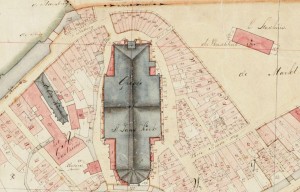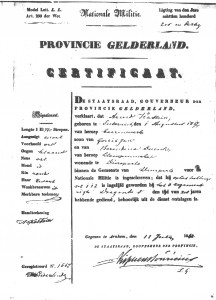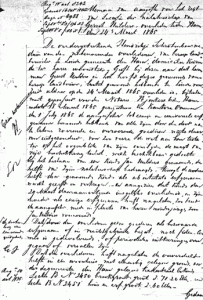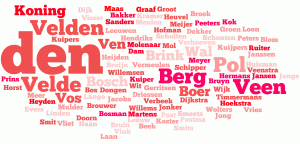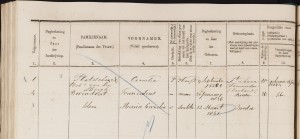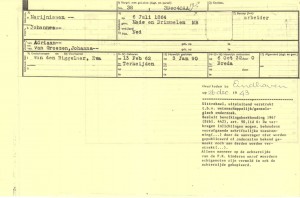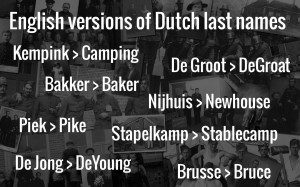The kadaster is the government body responsible for the registration of property (real estate). Introduced in 1832, the kadaster records the owners of all plots of land and ships. In addition, the kadaster records any rights attached to the property and any mortgages against the property. The kadaster information is used as the basis for property tax. … [Read more...]
Physical descriptions in military records
As part of the appendices to a marriage record, the groom had to submit proof that he had fulfilled his military duties. This certificate of the National Militia often contains a physical description. In some cases, the physical description is left blank, for example if the man did not have to serve because he had brothers in the army already. This article will give an overview of the most frequent Dutch terms and their translations. … [Read more...]
Search forms
There are many Dutch websites out there that provide access to genealogical records. Many of them use a search form that is available in Dutch only. Knowing the standard terms will enable you to use these forms. … [Read more...]
Death duties files
To be able to collect tax on estates of deceased people, the family of the deceased was required to file a death duties file within 6 months of the death. These death duties files can be very interesting sources to get an overview of the property of our ancestors. … [Read more...]
Suffixes in surnames
Different regions in the Netherlands have different customs. This applies to Dutch surnames as well as to many other traditions. Some areas use suffixes that are typical for that region. Knowing about the suffixes in Dutch family names can help you in trying to find out in which province to look for your ancestors. More information about regional customs can also be found in the articles about the different provinces in the Geography section. … [Read more...]
Population registers
Population registers can be a great source of information because they list all the inhabitants of a house, usually one or more families together with their domestic staff. Since 1850, the Dutch population registers form a continuous registration where you can find who lived where at all times. They look like census records but differ in one important aspect: population registers were kept up-to-date during the period the register covers (usually ten years). If you think of the census record as … [Read more...]
Personal record card
Personal record cards were used from 1938 to keep track of who lived where. They are part of the population registration. Personal record cards are a great source of information for recent research because they cover the period from 1938 onward. Copies of personal record cards of deceased people can be ordered for a fee from the Central Bureau for genealogy. … [Read more...]
English versions of Dutch last names
When Dutch people arrived in the United States or other English-speaking countries, often their names got changed. This was either done on purpose, to make the name easier to write and remember, or by accident because the clerk didn't know how to spell the name and wrote it down phonetically. For this reason, a single family name can often be found in many different spellings in different documents. This article gives an overview of the types of changes that names underwent and also gives a … [Read more...]
Dates and times
List of terms you need to translate dates and times. Note on dates: Dutch dates are written in the form dd-mm-yyyy, so 2-5-1920 means 2 May 1920. … [Read more...]
Patronymics
'Patronymic' literally means 'father's name'. It means that someone calls himself after his father, for example a son of Jan would call himself 'Jansen'. This is similar to the English name 'Johnson'. … [Read more...]
